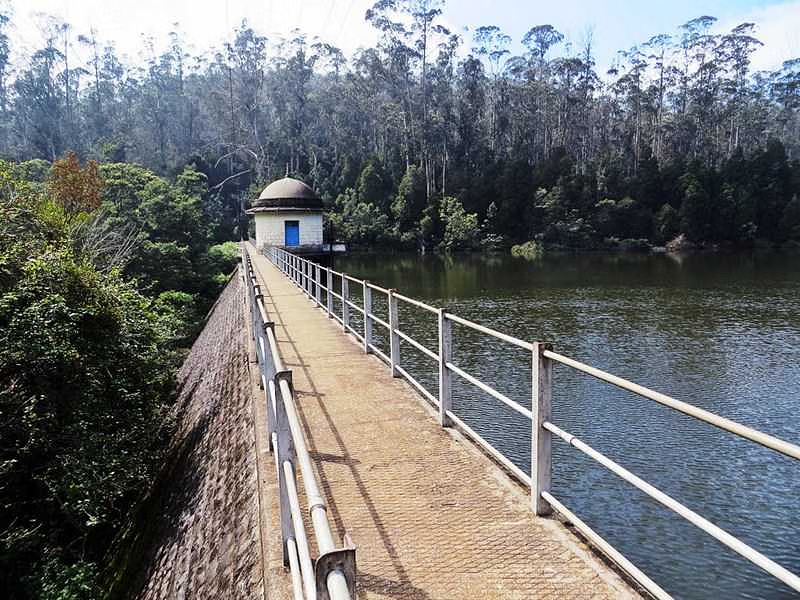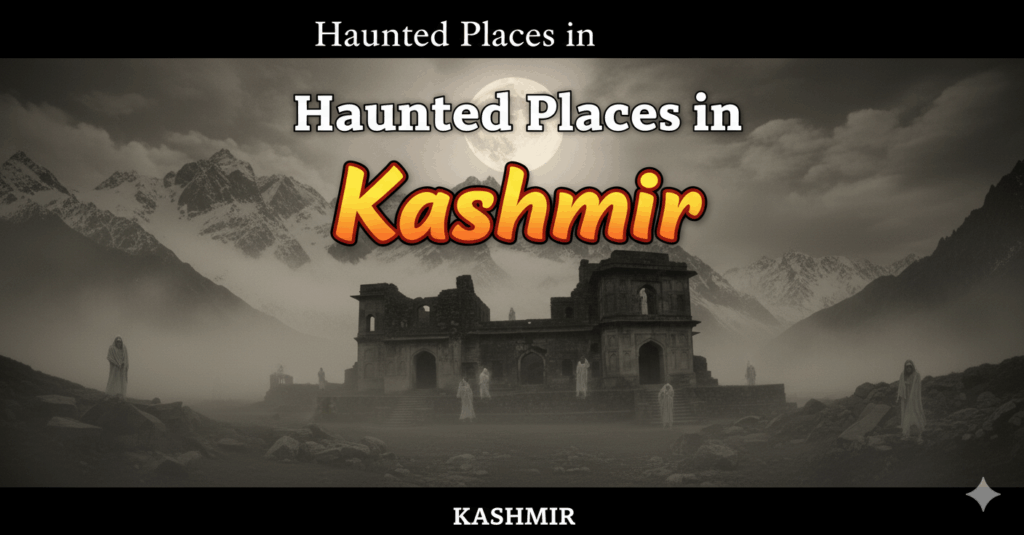The magnificent Taj Mahal, a UNESCO World Heritage Site and one of the Seven Wonders of the World, attracts over 6 million visitors annually to witness Shah Jahan’s eternal symbol of love for Mumtaz Mahal. Understanding the best time to visit Taj Mahal to avoid crowd becomes crucial for experiencing this architectural marvel’s serene beauty without overwhelming tourist masses, long queues, and restricted photography opportunities. Poor timing can result in rushed visits, limited access to prime viewing spots, and missing the monument’s peaceful ambiance that makes it truly magical.
Strategic planning ensures you witness the Taj Mahal’s pristine white marble beauty during optimal lighting conditions while avoiding peak tourist influx. Smart timing transforms your visit from a crowded tourist experience into an intimate encounter with one of history’s most romantic architectural achievements.
Table of Contents
Quick Reference Guide: Optimal Taj Mahal Visit Times
| Category | Optimal Choice | Crowd Level | Lighting Condition | Best For |
|---|---|---|---|---|
| Best Season | October-March | Moderate | Pleasant weather | First-time visitors |
| Best Month | November-February | Low-Moderate | Clear skies | Photography enthusiasts |
| Best Time | Early morning (sunrise) | Very Low | Golden light | Peaceful experience |
| Best Day | Tuesday-Thursday | Low | Consistent | Crowd-averse visitors |
| Avoid Completely | Friday | Closed | N/A | All visitors |
Understanding these patterns helps you navigate the Taj Mahal’s beauty while maximizing both photographic opportunities and peaceful contemplation during your visit.
Best Month to Visit Agra Taj Mahal
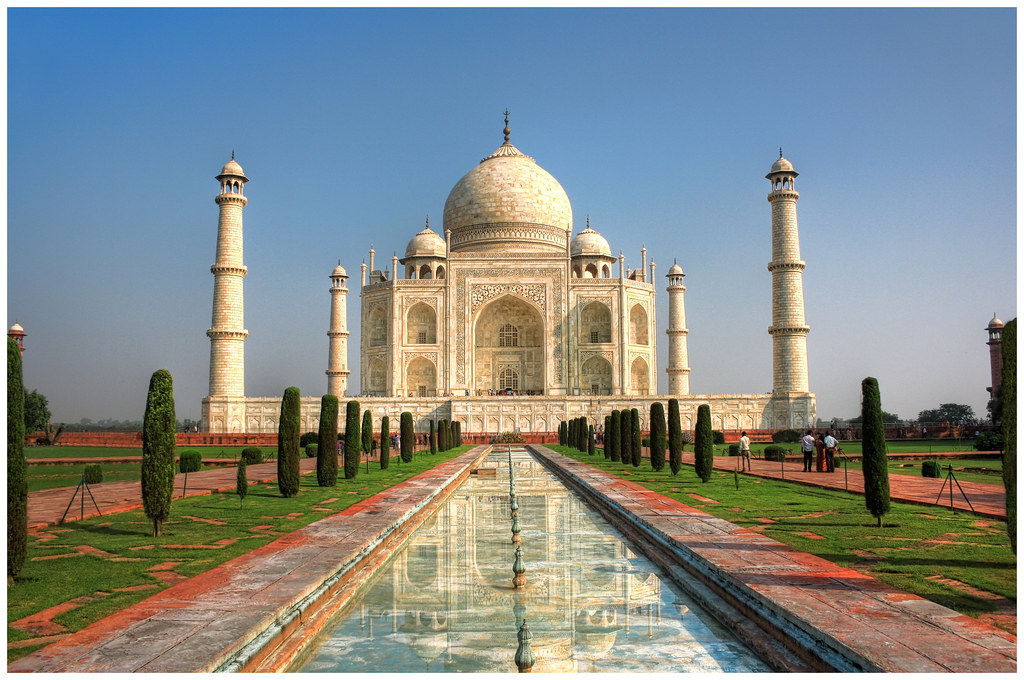
Monthly selection significantly impacts your Taj Mahal experience, affecting weather comfort, crowd density, and overall photographic opportunities. The best month to visit Agra Taj Mahal varies based on your preferences for weather comfort versus crowd avoidance.
November-February: Optimal Weather Window
November-February offers perfect temperatures ranging from 10°C to 25°C, creating ideal conditions for extended monument visits. The clear skies and minimal pollution during these months provide exceptional visibility for appreciating intricate marble work and architectural details. These months feature crisp mornings and clear days with minimal haze, creating some of the best visibility conditions throughout the year. Key advantages include:
- Crystal clear air and minimal haze for perfect monument photography
- Comfortable daytime conditions for extended exploration without weather stress
While crowd levels remain moderate to high due to the pleasant climate, the comfortable walking conditions and excellent photography lighting make this period worthwhile for first-time visitors.
March-April: Balanced Experience
March-April experiences temperatures ranging from 15°C to 30°C, offering pleasant days with increasing warmth toward April’s end. These months provide comfortable conditions for monument exploration with extended daylight hours and blooming gardens surrounding the Taj Mahal. However, crowd levels tend to be high due to perfect weather conditions, making early morning visits essential.
May-June: Extreme Heat, Minimal Crowds
May-June presents extreme heat with temperatures ranging from 30°C to 45°C, creating challenging circumstances for most visitors. However, these months offer significantly reduced crowd levels, resulting in shorter queues, immediate entry access, and budget accommodation rates throughout Agra. Summer advantages include:
- Almost private monument experience with no waiting times
- Lowest accommodation and travel costs throughout Agra
July-October: Monsoon and Post-Monsoon Period
July-October brings cooler temperatures ranging from 25°C to 35°C due to frequent rainfall during monsoon months. The dramatically reduced crowd levels allow for unique photographic opportunities with dramatic sky backgrounds and lush garden landscapes. October marks the beginning of pleasant weather returning, making it an excellent transitional month with fewer crowds than peak winter season.
For travelers combining Taj Mahal with other regional experiences, Rajasthan tour packages offer expertly planned itineraries including Agra with optimal timing coordination.
Taj Mahal in Morning: Ultimate Crowd Avoidance Strategy
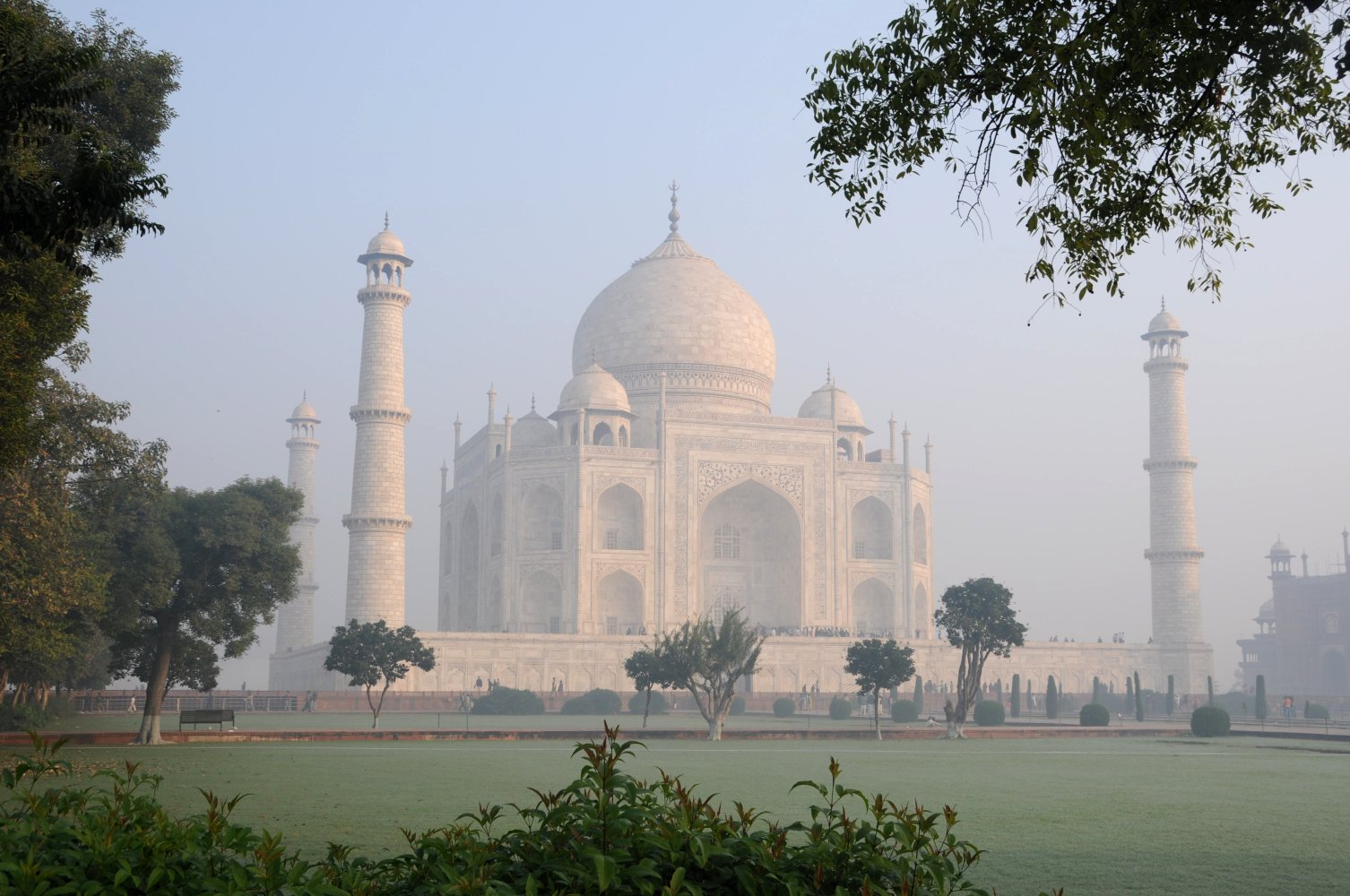
Taj Mahal in morning hours provides the most effective strategy for avoiding crowds while experiencing optimal lighting and peaceful ambiance. Early morning visits offer multiple advantages including cooler temperatures, dramatic lighting effects, and significantly reduced tourist numbers.
Early Morning Visit Benefits
Visiting during sunrise hours provides multiple strategic advantages that make early morning the optimal time for crowd avoidance and enhanced monument experience.
Sunrise Hours (6:00-8:00 AM): Golden Hour Magic
Sunrise timing between 6:00-8:00 AM offers minimal tourist presence during opening hours, creating an almost private experience with this world wonder. The golden hour illumination creates magical effects on the white marble, transforming the monument’s appearance throughout the morning light progression. Morning benefits include:
- Magical lighting effects on white marble creating stunning visual impact
- Almost exclusive access during opening hours with minimal tourist presence
Prime Morning Hours (8:00-10:00 AM): Manageable Crowds
Prime morning hours from 8:00-10:00 AM maintain manageable visitor numbers before organized tour groups arrive in force. The excellent visibility provided by clear morning air ensures crisp monument views perfect for detailed photography and architectural appreciation.
Morning Visit Planning Strategy
Maximizing the benefits of early morning visits requires strategic planning to ensure optimal positioning for photography and exploration.
Optimal Arrival Schedule
Strategic planning maximizes morning visit benefits:
- Reach the gate by 6:00 AM for immediate sunrise entry
- Prime photography time between 6:30-7:30 AM during golden lighting
- Detailed monument exploration between 7:30-9:00 AM
- Garden photography and departure between 9:00-10:00 AM before crowds arrive
Gate Selection Strategy
Gate selection significantly impacts morning experience success, with the Eastern Gate offering less crowded alternatives and better parking facilities compared to the popular Western Gate.
How Much Time to See Taj Mahal
Understanding how much time to see Taj Mahal properly helps plan efficient visits that balance thorough exploration with crowd avoidance strategies. Time requirements vary based on interest levels, photography objectives, and desired depth of cultural immersion.
Recommended Visit Durations
Planning appropriate time allocation ensures comprehensive monument experience while maintaining realistic expectations for different visitor interests.
Quick Visits (2-3 Hours): Essential Experience
Quick visits lasting 2-3 hours focus on essential monument viewing including main structure photography, brief garden exploration, and standard tourist photos. This duration suits time-constrained visitors and those seeking basic sightseeing experiences.
Standard Visits (3-4 Hours): Comprehensive Exploration
Standard visits requiring 3-4 hours allow comprehensive monument exploration, interior access to the main mausoleum chamber, complete garden exploration, and cultural learning through audio guide usage. This duration proves ideal for most tourists seeking balanced experiences.
Extended Visits (4-6 Hours): Photography Focus
Extended visits spanning 4-6 hours cater to photography enthusiasts requiring detailed architectural photography during different lighting conditions and nearby attractions like Mehtab Bagh for sunset views.
Time-Saving Strategies
Implementing efficient preparation and visit planning techniques dramatically reduces waiting time while maximizing monument exploration opportunities.
Advance Preparation
Advance preparation proves essential for streamlined visits, beginning with online ticket booking through official portals ASI Ticket Booking or Taj Mahal Official Ticketing to avoid queuing delays. Understanding monument layout and priority areas beforehand prevents confusion and maximizes visit time effectiveness.
Efficient Visit Planning
Efficient visit planning focuses on reaching gates 30 minutes before opening time, developing strategic exploration routes, and prioritizing important areas during optimal lighting conditions.
For comprehensive North India experiences, Udaipur tour packages combine Rajasthani heritage with Agra’s Mughal architecture for diverse cultural exploration.
What to Wear at Taj Mahal
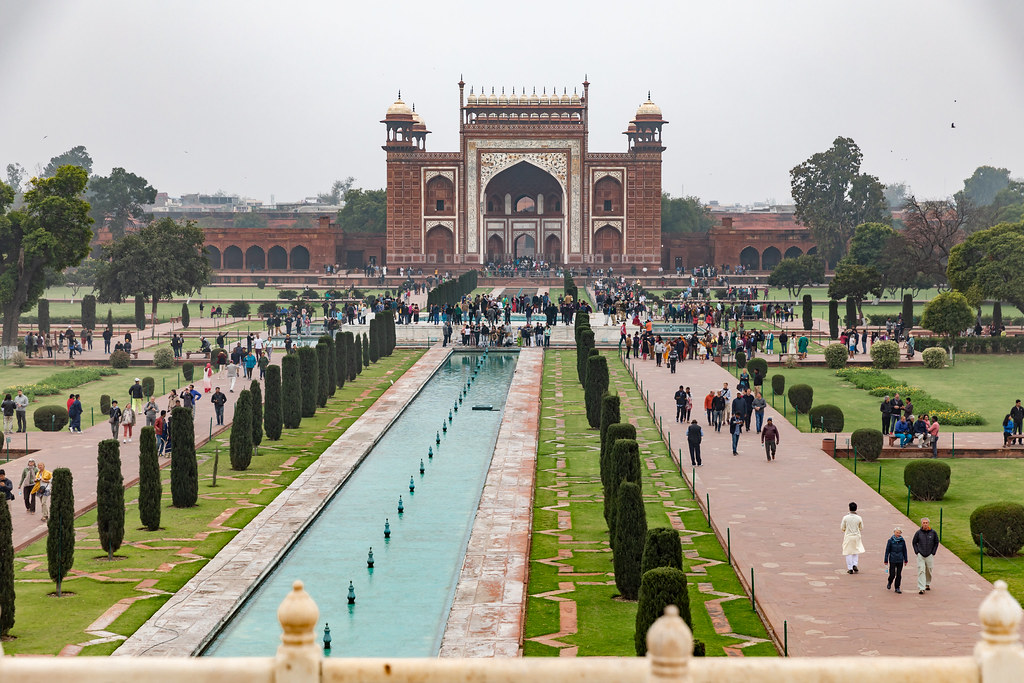
Understanding what to wear at Taj Mahal ensures comfort, cultural sensitivity, and practical functionality during your visit. Appropriate clothing choices enhance your experience while respecting the monument’s cultural significance.
Seasonal Clothing Recommendations
Appropriate clothing choices based on seasonal conditions ensure comfort while maintaining cultural sensitivity and practical functionality.
Winter Visits (November-February): Layered Comfort
- Layered clothing with light sweaters for temperature changes
- Comfortable footwear with good grip for marble surfaces
- Light jacket for early morning visits
- Sun hat and sunglasses for bright afternoon periods
Summer Visits (March-June): Heat Protection
- Light-colored cotton fabrics reflecting heat
- Loose-fitting clothes for air circulation
- Wide-brimmed hat, sunglasses, and sunscreen
- Closed shoes easily removed (required inside mausoleum)
Cultural and Practical Guidelines
Understanding dress code requirements and practical considerations ensures respectful monument visits while maintaining personal comfort and safety.
Dress Code Requirements
- Modest clothing covering shoulders and knees out of cultural respect
- Comfortable walking shoes for extensive marble surface walking
- Small bag for essentials (large bags prohibited)
Photography Considerations
- Avoid very bright colors that clash with white marble photography
- Consider traditional Indian attire for cultural photo opportunities
- Prioritize comfort over fashion for extended walking
Taj Mahal Off Day and Weekly Planning
Understanding Taj Mahal off day schedule is crucial for planning visits and avoiding disappointment. The monument follows a specific weekly closure pattern affecting visit planning and crowd distribution.
Weekly Schedule and Closure Information
Understanding the monument’s operating schedule prevents disappointment and helps optimize visit planning around closure periods and peak days.
Regular Operating Days
- Monday through Thursday: Open sunrise to sunset with normal crowd levels
- Saturday and Sunday: Open but experience highest crowd concentrations
- Tuesday through Thursday: Best days for crowd avoidance with moderate visitor numbers
Weekly Closure Pattern
- Every Friday: Taj Mahal off day for general visitors (complete closure)
- Friday closure respects nearby mosque activities
- No exceptions for any tourist categories including foreign visitors
Special Night Viewing
- Available 5 nights per month (2 days before, during, and 2 days after full moon)
- Timing: 8:30 PM – 12:30 AM in 30-minute batches of 50 people
- Advance booking required 24 hours prior from ASI office
Strategic Day Selection
Choosing optimal visit days based on crowd patterns and monument accessibility significantly impacts your overall experience quality.
Optimal Visit Days
- Tuesday-Wednesday: Lowest domestic tourist crowds
- Thursday: Good balance of accessibility and manageable crowds
- Monday: Acceptable choice avoiding weekend rush
Days to Avoid
- Friday: Complete closure for all visitors
- Saturday-Sunday: Peak domestic tourism creating significant crowds
- National Holidays: Extreme crowd conditions
Advanced Crowd Avoidance Strategies
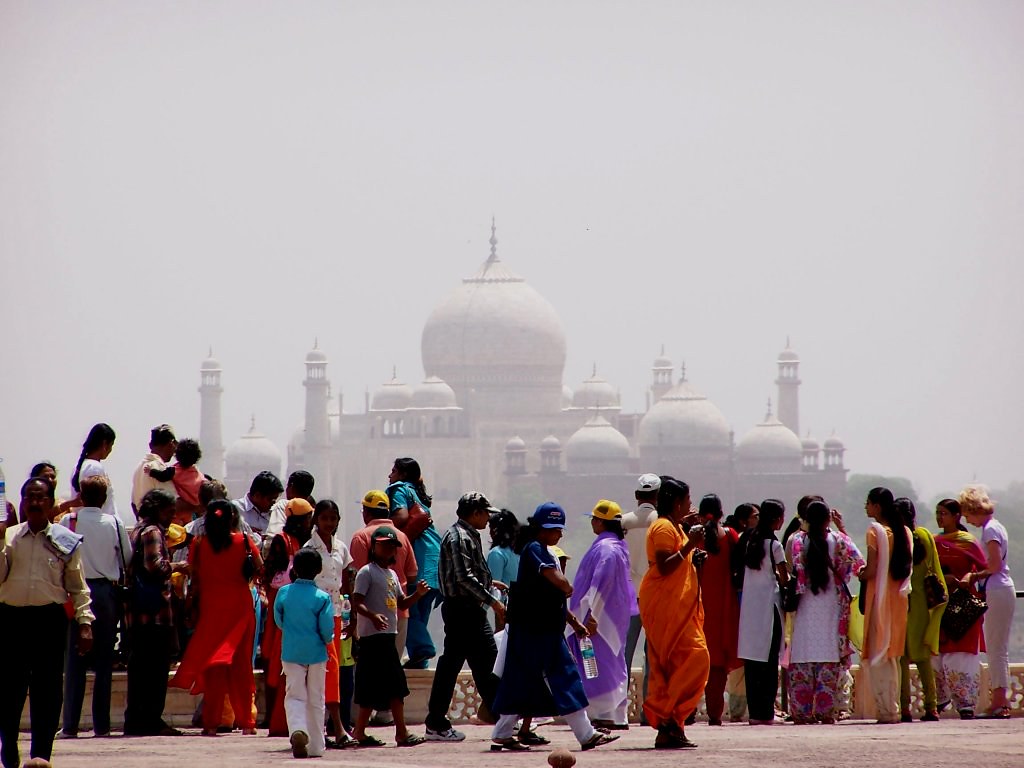
Strategic planning beyond basic timing helps maximize your peaceful Taj Mahal experience through lesser-known techniques and insider knowledge.
Gate Selection Strategy
Strategic entrance choice significantly impacts waiting times, crowd exposure, and overall visit convenience during monument exploration.
Eastern Gate Advantages
- Lower foot traffic and less popular among tour groups
- Better parking facilities reducing arrival stress
- Consistently faster entry processing during peak periods
Western Gate Considerations
- Most popular with highest tourist traffic
- Heavy concentration of organized tour groups
- More comprehensive visitor services and amenities
Alternative Viewing Experiences
Exploring different perspectives and timing options provides unique monument experiences while avoiding traditional tourist crowd concentrations.
Mehtab Bagh Sunset Views
- Fewer visitors than main monument for sunset photography
- Unique rear view of Taj Mahal across Yamuna River
- Open during sunset hours when main monument closes
- Unobstructed views perfect for golden hour shots
Night Viewing Programs
- Limited to 50 people per 30-minute slot
- Tickets must be purchased 24 hours prior in person
- Taj Mahal illuminated by natural moonlight creating ethereal atmosphere
Seasonal Crowd Avoidance
Strategic seasonal planning helps balance weather comfort with crowd density for optimal monument visiting experiences.
Off-Season Benefits
- Summer strategy: Accept heat challenges for dramatically reduced crowds
- Monsoon opportunities: Weather risks balanced by minimal tourist presence
- Early winter: November offers good weather before peak season crowds
Peak Season Management
- Ultra-early arrival: Reach gates 30 minutes before opening time
- Strict weekday-only visits during high season
- Stay closer to monument for easier early access
For mountain escape experiences away from crowds, Kashmir tour packages provide serene Himalayan alternatives to busy heritage sites.
Conclusion
The best time to visit Taj Mahal to avoid crowd requires strategic combination of seasonal timing, daily scheduling, and insider knowledge about visitor patterns. Early morning visits during Tuesday through Thursday in November through February provide optimal conditions for peaceful exploration, excellent photography, and meaningful cultural experiences. Understanding that Taj Mahal off day occurs every Friday helps avoid disappointment, while knowing how much time to see Taj Mahal properly (3-4 hours minimum) ensures comprehensive exploration. Essential preparation includes appropriate clothing choices, advance online ticket booking, and arriving before sunrise for the most serene Taj Mahal in morning experience.
For comprehensive travel experiences beyond Agra, India tour packages offer expertly coordinated multi-city itineraries including optimal Taj Mahal timing with other iconic destinations.
You can visit us at VDP Travels, Neighbourhood Complex, F- 5, near SBI Bank, Sector 4, Nerul, Navi Mumbai, Mumbai, Maharashtra 400706. For comprehensive Taj Mahal visit packages with optimal crowd-avoiding timing, expert photography guidance, and seamless Agra exploration experiences, call +91 99675 18405, or visit https://vdp-travels.com.
Best Time to Visit Taj Mahal to Avoid Crowd – FAQs
What is the best time to visit Taj Mahal to avoid crowd?
Early morning during weekdays (Tuesday-Thursday) between November-February offers the least crowds. Arrive at sunrise (6:00 AM) for optimal peaceful experience and golden lighting.
What should I wear at Taj Mahal?
Wear modest, comfortable clothing covering shoulders and knees. Light-colored cotton for summer, layers for winter, and closed shoes that can be easily removed inside the mausoleum.
When is Taj Mahal in morning least crowded?
Taj Mahal morning hours from 6:00-8:00 AM during sunrise provide minimal crowds, perfect lighting, and peaceful atmosphere before tour groups arrive.
How much time to see Taj Mahal properly?
Plan 3-4 hours for comprehensive exploration including main monument, gardens, interior mausoleum visit, and photography. Quick visits need minimum 2 hours.
What is Taj Mahal off day?
Taj Mahal is closed every Friday for general visitors. This weekly closure is for nearby mosque prayer activities and applies to all tourist categories.
Which is the best month to visit Agra Taj Mahal?
November through February offers ideal weather conditions with clear skies, comfortable temperatures (10-25°C), and excellent visibility for photography and exploration.
Can I visit Taj Mahal at night?
Yes, night viewing is available 5 nights per month during full moon periods (8:30 PM-12:30 AM). Tickets must be purchased 24 hours in advance from ASI office.
Which gate has fewer crowds at Taj Mahal?
Eastern Gate typically has lower foot traffic and better parking compared to popular Western Gate. Southern Gate is mainly for pedestrians with minimal tour group presence.
What items are prohibited inside Taj Mahal?
Large bags, food items, tobacco, electronic equipment (chargers, power banks), tripods, and drones are prohibited. Only small purses, mobile phones, and transparent water bottles allowed.
How early should I reach Taj Mahal gates?
Arrive 30 minutes before opening time (around 5:30 AM) to be among first visitors entering at sunrise for optimal crowd avoidance and photography conditions.

